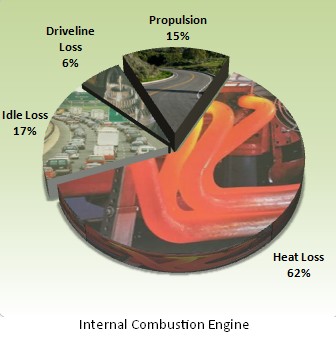Fuel economy is a popular subject these days, and many advertisements talk about how their car is thrifty, miserly, stingy, (or a whole host of other synonyms for "efficient") with its fuel use.
That may well be, but as a whole, Internal Combustion Engines (ICE's) are remarkably fuel inefficient as it turns out. I kinda suspected that, but I was surpised at exactly how inefficient the ol' car engine is. Of all the chemical energy locked up in a gallon of gasoline, only about fifteen percent actually makes the car go forward.
Fifteen percent. A meager one-sixth of all the energy in the gasoline. Let's try to understand this. Here in California, gasoline has passed the four dollar mark (and I imagine the rest of the country isn't far behind.) So, given that price, let's see where your money is going. According to the CSAA, out of that $4....
- About $2.48, (roughly 62%) is lost to heat. In other words, you're paying two and a half dollars per gallon to make your engine block hot.
- 68 cents (17%) is lost keeping your engine running while you're waiting for the light to turn green, or any other time you're standing still.
- 24 cents is lost through the driveline loss: that's friction in the transmission as gears transfer energy from the engine to the wheels.
- Finally, only 60 cents (15%) of your four dollars is actually used to make your car get from point A to point B.
Pretty sobering numbers, really: $3.40 of your $4 doesn't go toward moving your car forward. How's that for fuel-efficiency?





 Generate a QR code link to this page
Generate a QR code link to this page